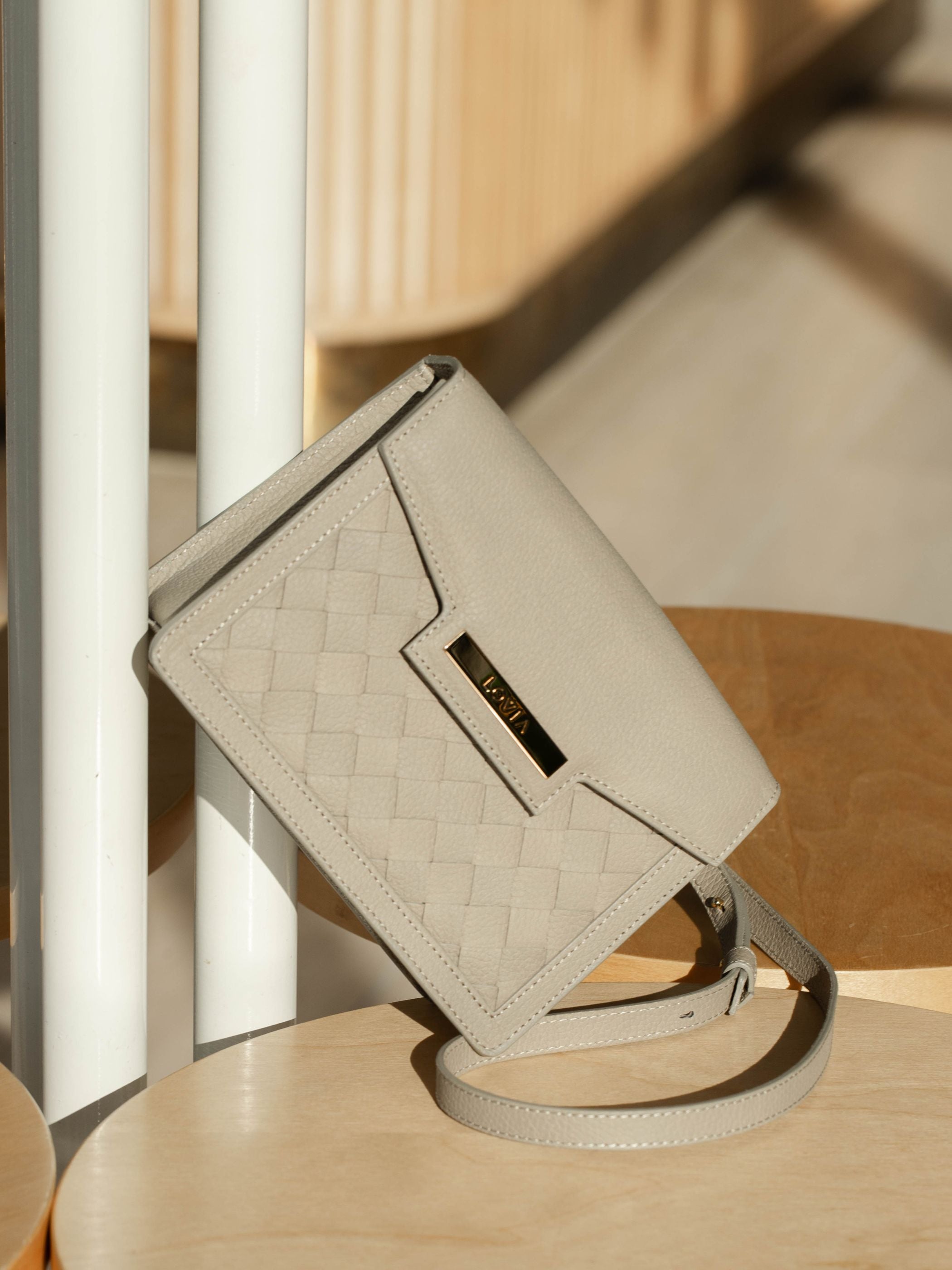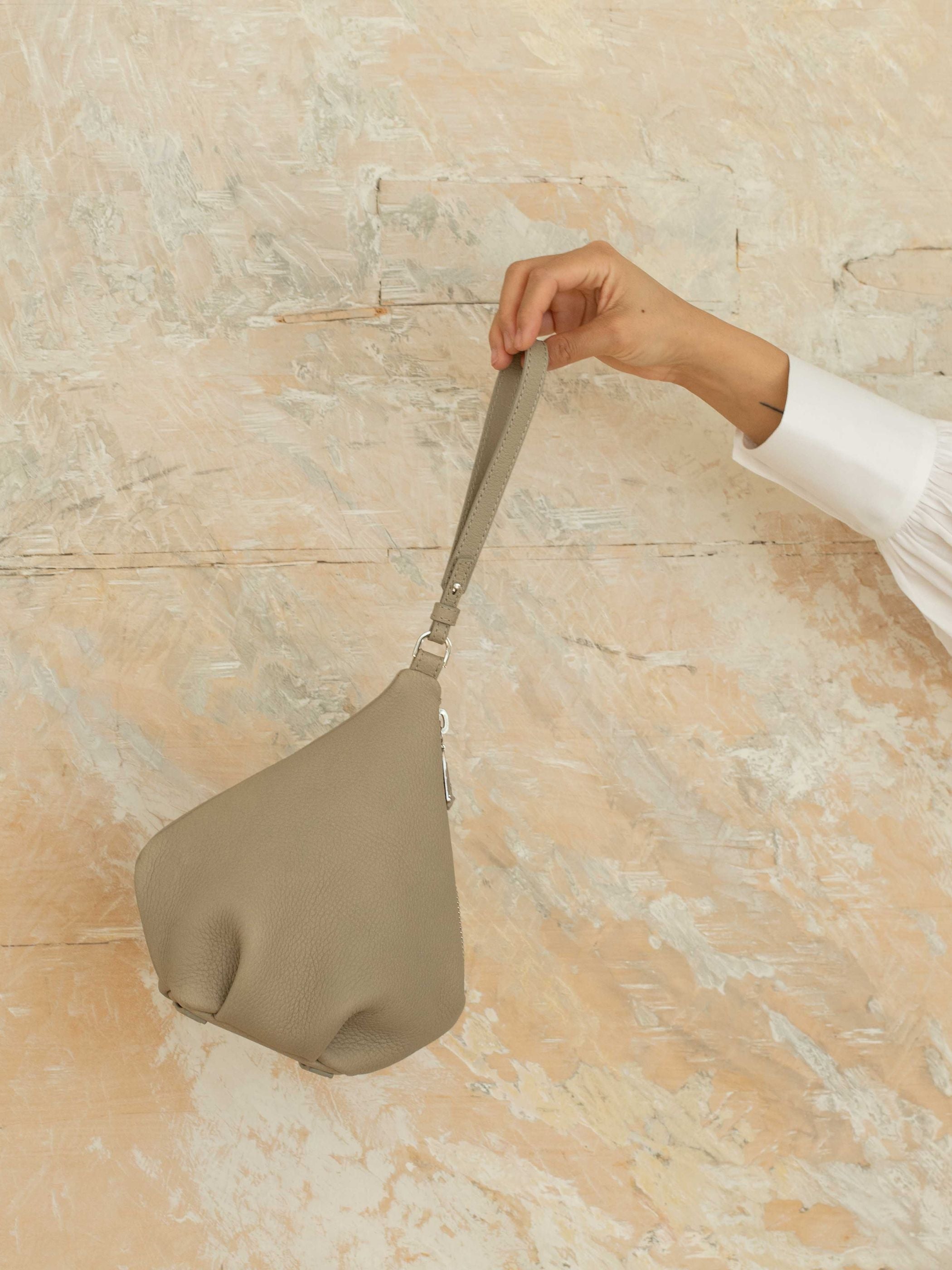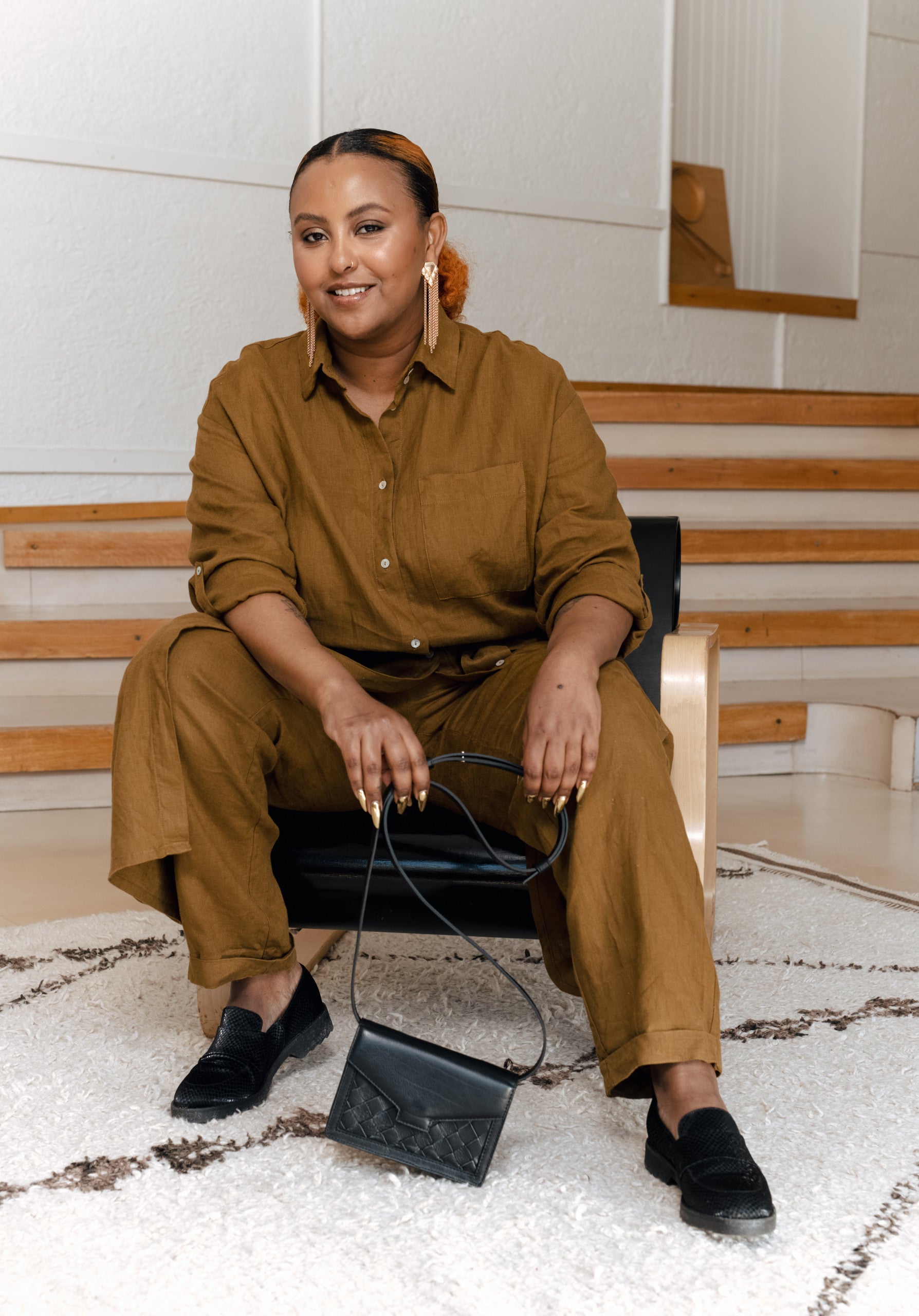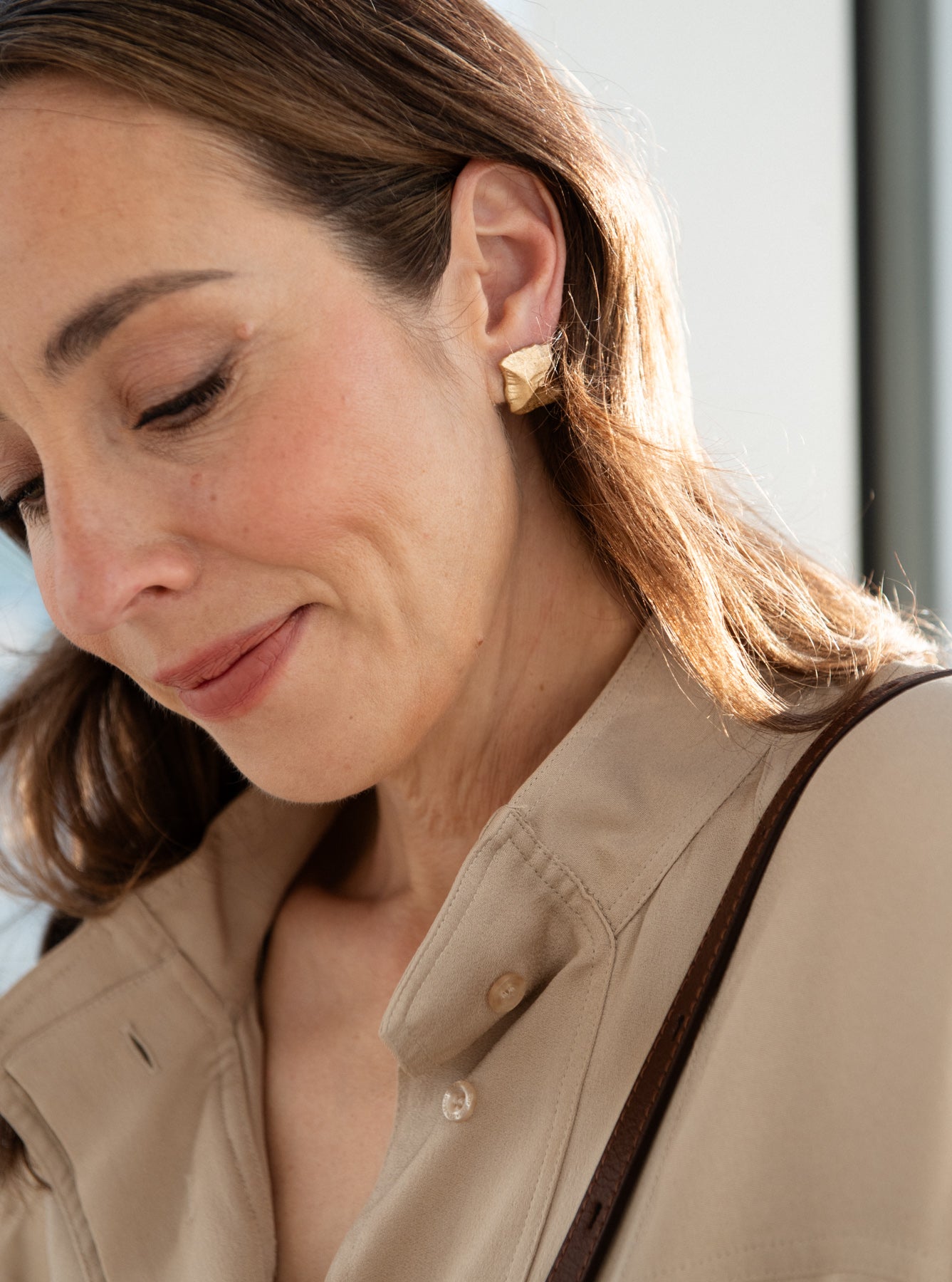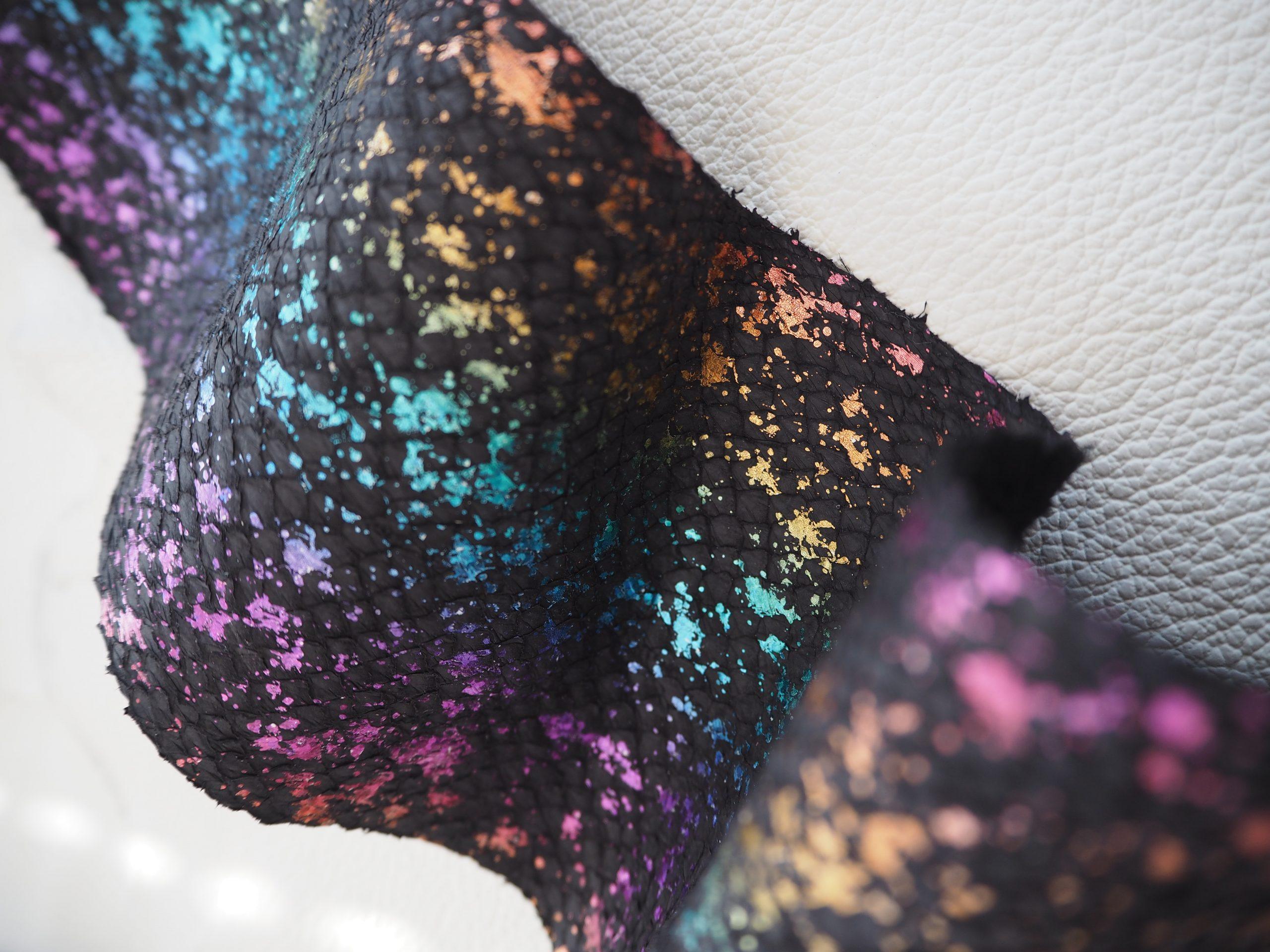Natural fish skin as a material for bags
From Kainuu waterways to bag material
Ulla Haverinen
Natural fish skin

Utilization of fishing by-products
At the heart of the circular economy is the idea of utilizing existing materials efficiently, rather than constantly creating new ones, in order to reduce the environmental burden. Ulla Haverinen uses fish skins, a by-product of fishing, in our bags, following the idea of a circular economy.
Catching and skinning wild fish for cooking has inspired Ulla Haverinen to experiment with tanning the skins of different fish species since 2017. The fish are caught for their own family to eat, but now the skins are also collected for further use, which minimizes waste. Fish skins that previously went to waste are given a new life as material for unique bags.
FOUNDED: 2017
EMPLOYEES: 2
LOCATION: KUHMO, FINLAND
From old traditions to modern design
The use of fish skin has a long tradition, as indigenous peoples are known to have made accessories, bags and shoes from fish skin. Reducing environmental impact requires solutions that do not constantly produce new materials, but rather utilize existing ones. The solution may therefore be found in old traditions.
The fish used by Ulla Haverinen are caught in Kainuu from the Vieksinjoki, Kylmänjärvi and Ontonen rivers in Kuhmo. The fish is caught for the family's own use as food using various methods, such as nets or trolling, or ice fishing in winter. The fishing produces pike, zander and perch, the skins of which are collected for further use.
To make fish skin into a durable material for bags, it must be tanned. The tanning liquor is made from the bark of a tree, such as willow, spruce or alder, mixed with water, salt, pine soap, rapeseed oil and beeswax. The leather is then dried and rapeseed oil rubbed into the surface. The entire process takes about 3-4 weeks before it is ready for use in its new application.
Fish skin is a soft, yet very durable material. Perfect for bags! After tanning, the fish skins travel by road to our designer Outi's desk in Helsinki, where they are given a new life as bag details.

Greetings from Kuhmo
We want to give our partners a chance to have their voices heard, because without them the idea of utilizing waste material would just remain, well, an idea. Here are some greetings from Ulla Haverinen and bits of fish skin processing, just as it is in Kuhmo.
"I started researching and experimenting with fish skin tanning in 2017. Catching and skinning fish for cooking inspired me to further process the fish skin and experiment with my own skills. The different patterns and colors of fish skin have always fascinated me and it is interesting to see the end result of my own handiwork. My sources of inspiration have also been Lovia and my daughter, designer Outi's use of materials and following the design closely.
I do all the work by hand, without machines or tools. The work is challenging and long-term, but also rewarding. Cooperation with Lovia is straightforward and I feel like I belong to the same team where my skills are valued. It is very nice and rewarding to see my own handprint on Lovia's finished products. At the same time, I can honor an old tradition, alongside new industrial production."
-Ulla Haverinen
Where can we do better?
Together with Ulla, we have managed to find a way to further process fish skin using traditional methods that have long since disappeared. In the future, we want to find tanning methods suitable for small-scale production and bring old, traditional fish skin processing methods into the present day using modern means.

Ulla Haverinen
natural fish skin

A fishing by-product for use
At the heart of the circular economy is the idea of utilizing existing materials efficiently, rather than constantly creating new ones, in order to reduce the environmental burden. Ulla Haverinen uses fish skins, a by-product of fishing, in our bags, following the idea of a circular economy.
Catching and skinning wild fish for cooking has inspired Ulla Haverinen to experiment with tanning the skins of different fish species since 2017. The fish are caught for their own family to eat, but now the skins are also collected for further use, which minimizes waste. Fish skins that previously went to waste are given a new life as material for unique bags.
FOUNDED: 2017
EMPLOYEES: 2
LOCATION: KUHMO, FINLAND

From old traditions to modern design
The use of fish skin has a long tradition, as indigenous peoples are known to have made accessories, bags and shoes from fish skin. Reducing environmental impact requires solutions that do not constantly produce new materials, but rather utilize existing ones. The solution may therefore be found in old traditions.
The fish used by Ulla Haverinen are caught in Kainuu from the Vieksinjoki, Kylmänjärvi and Ontonen rivers in Kuhmo. The fish is caught for the family's own use as food using various methods, such as nets or trolling, or ice fishing in winter. The fishing produces pike, zander and perch, the skins of which are collected for further use.
To make fish skin into a durable material for bags, it must be tanned. The tanning liquor is made from the bark of a tree, such as willow, spruce or alder, mixed with water, salt, pine soap, rapeseed oil and beeswax. The leather is then dried and rapeseed oil rubbed into the surface. The entire process takes about 3-4 weeks before it is ready for use in its new application.
Fish skin is a soft, yet very durable material. Perfect for bags! After tanning, the fish skins travel by road to our designer Outi's desk in Helsinki, where they are given a new life as bag details.
Greetings from Kuhmo
We want to give our partners a chance to have their voices heard, because without them the idea of utilizing waste material would just remain, well, an idea. Here are some greetings from Ulla Haverinen and bits of fish skin processing, just as it is in Kuhmo.
"I started researching and experimenting with fish skin tanning in 2017. Catching and skinning fish for cooking inspired me to further process the fish skin and experiment with my own skills. The different patterns and colors of fish skin have always fascinated me and it is interesting to see the end result of my own handiwork. My sources of inspiration have also been Lovia and my daughter, designer Outi's use of materials and following the design closely.
I do all the work by hand, without machines or tools. The work is challenging and long-term, but also rewarding. Cooperation with Lovia is straightforward and I feel like I belong to the same team where my skills are valued. It is very nice and rewarding to see my own handprint on Lovia's finished products. At the same time, I can honor an old tradition, alongside new industrial production."
-Ulla Haverinen
Where could we do better?
Together with Ulla, we have managed to find a way to further process fish skin using traditional methods that have long since disappeared. In the future, we want to find tanning methods suitable for small-scale production and bring old, traditional fish skin processing methods into the present day using modern means.
Discover treasures made from salmon skin

wave small bag

onni clutch bag


